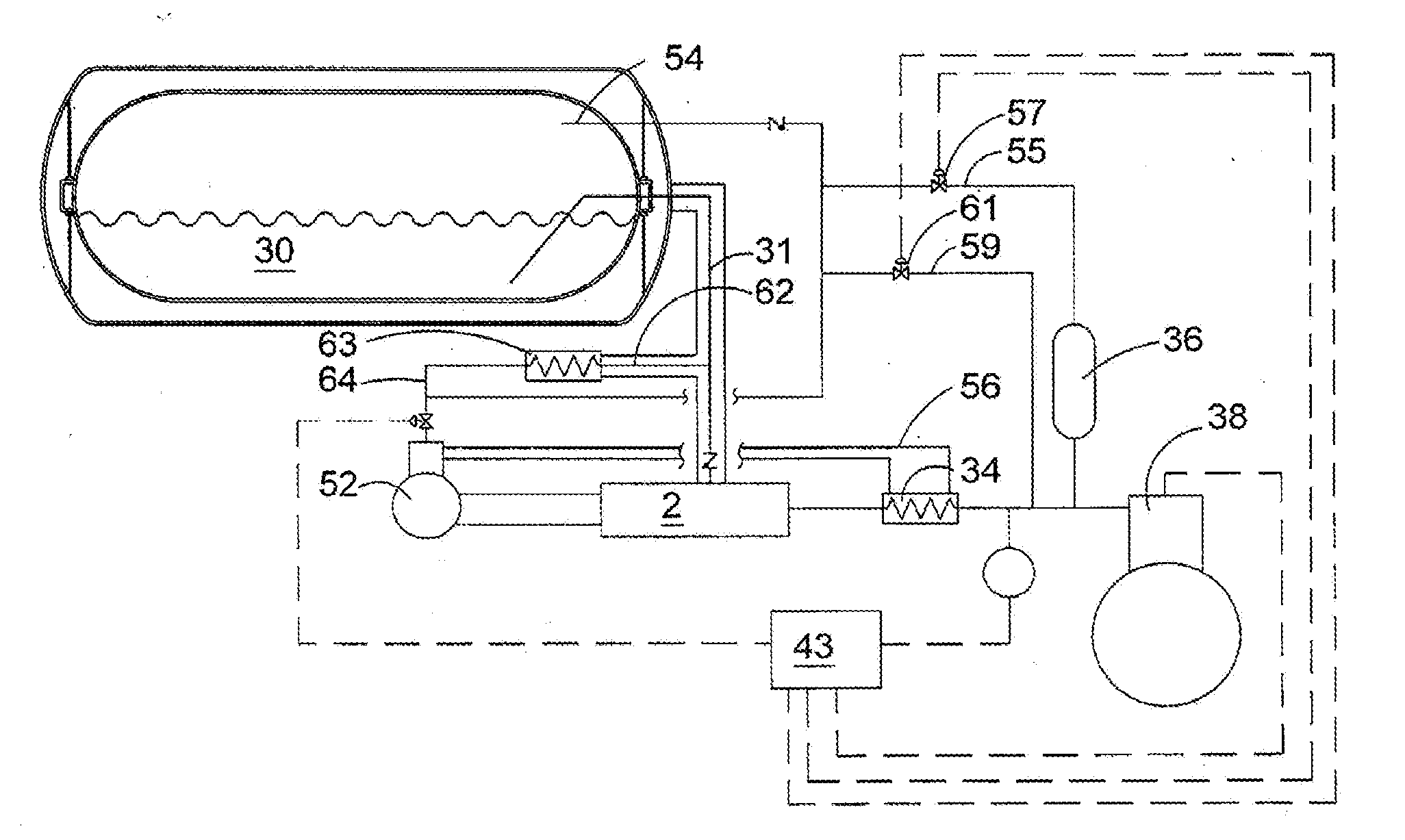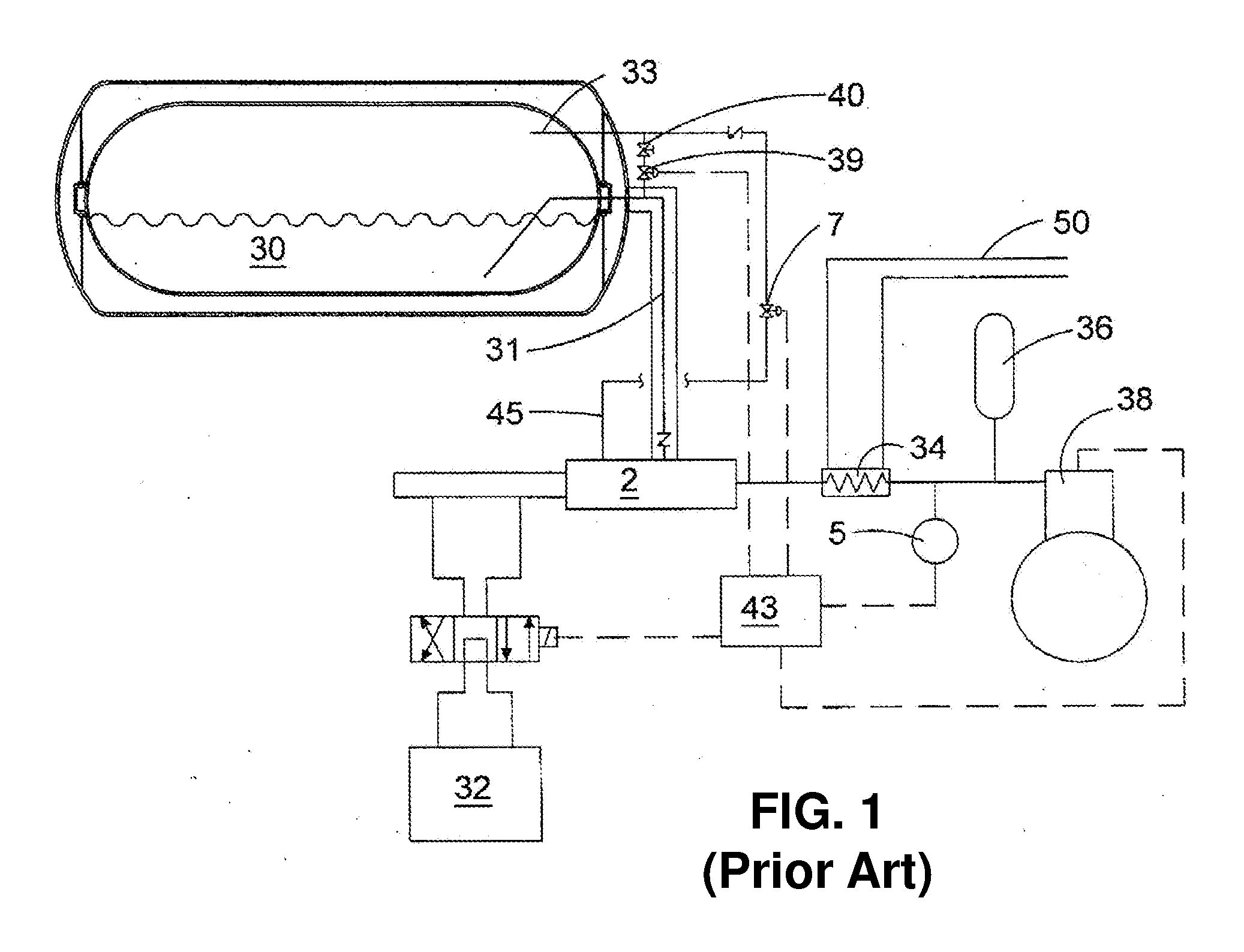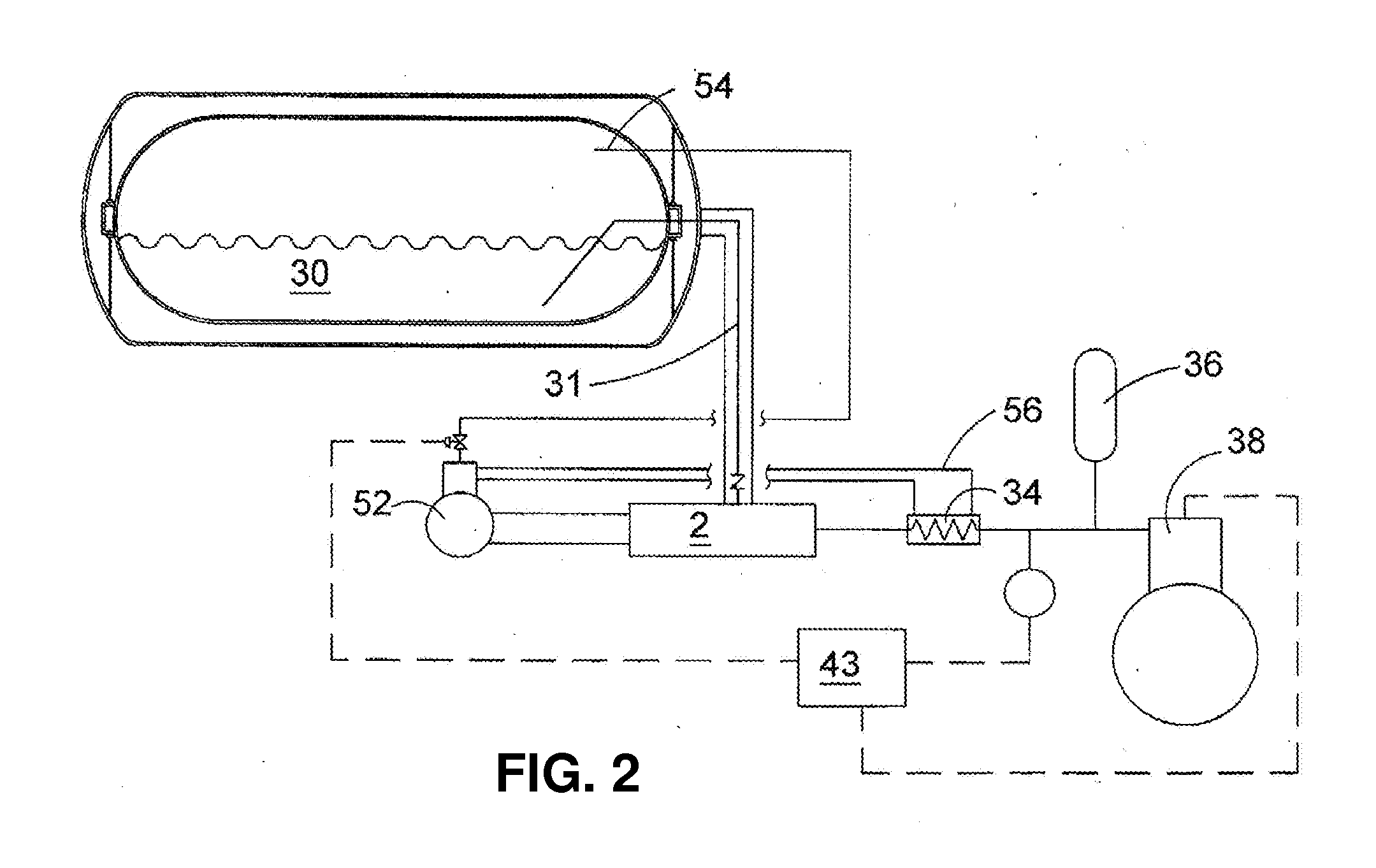Two Engine System With A Gaseous Fuel Stored In Liquefied Form
- Summary
- Abstract
- Description
- Claims
- Application Information
AI Technical Summary
Benefits of technology
Problems solved by technology
Method used
Image
Examples
example
[0038]The following illustrative example demonstrates a potential improvement in parasitic power as a result of using the disclosed system. However, this example should not be construed as limiting. Based on scaling up system performance of a reciprocating hydraulically actuated cryogenic pump, the projected parasitic power for a vehicle using a 4900 W engine is about 115 KW or 2.3%. However, based on the work done on the cryogenic fluid and typical efficiencies of mechanical drives, the projected parasitic power for the same vehicle employing an additional fumigated engine of similar efficiency in place of the hydraulic drive is about 0.8%. If the smaller auxiliary fumigated engine had a lower efficiency (in particular, 30% brake thermal efficiency compared to 40% for the main HPDI engine of the vehicle), the projected parasitic fuel flow would be 1.2% of the direct injection flow.
PUM
 Login to View More
Login to View More Abstract
Description
Claims
Application Information
 Login to View More
Login to View More - R&D
- Intellectual Property
- Life Sciences
- Materials
- Tech Scout
- Unparalleled Data Quality
- Higher Quality Content
- 60% Fewer Hallucinations
Browse by: Latest US Patents, China's latest patents, Technical Efficacy Thesaurus, Application Domain, Technology Topic, Popular Technical Reports.
© 2025 PatSnap. All rights reserved.Legal|Privacy policy|Modern Slavery Act Transparency Statement|Sitemap|About US| Contact US: help@patsnap.com



